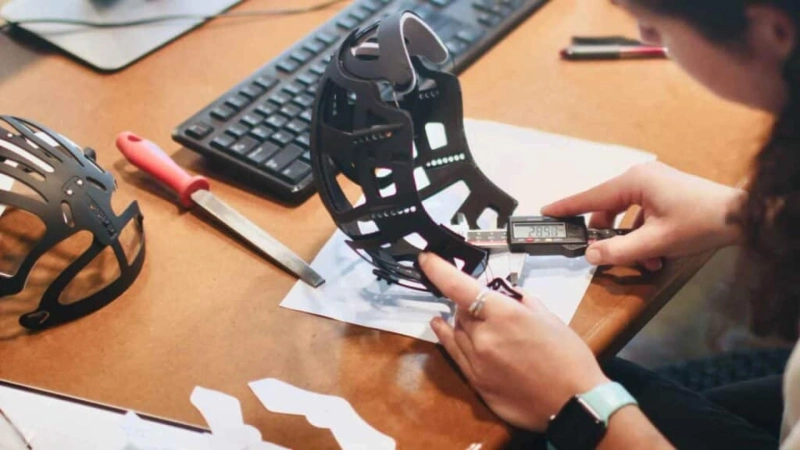Making a tactile mockup is just one aspect of prototyping. It is a proof of concept employing commercial gear combined with homemade components and a finished product made of carefully created parts. Although it\'s easy to conceive of prototypes as one, the process usually leads to the construction of several iterations. Because of this, new product designs typically undergo several prototype revisions before being accepted for the manufacturing line.
The prototype phases of the design process can range from three to five, and numerous test units are tested. With a rising score on the Technology Readiness Level scale, each phase signifies a step ahead in a product roadmap. Consequently, divided the prototyping procedure into three groups: The terms minimum viable product and proof of concept may vary depending on the product developer, but these stages are generally the same.
However, it should be emphasized that the process is typically nonlinear because developers will periodically go back and review prior iterations using the lessons they\'ve learned from various test rounds. Depending on the stage of the procedure, there will be different tools, approaches, decisions, and obstacles.
Define the Goal
The developer must create a broad vision for their product at this stage in the prototyping process. This stage might involve sketching, but it can also function as a verbal description if a few crucial questions are addressed. The answers to these inquiries provide essential hints as to whether the design will be practical and whether its demand can support the expense of production. The creator can then decide whether prototyping is necessary or whether they should change their original vision.
Prototypes, however, can occasionally be created at any stage of the product development process. It\'s crucial to understand that while developers create prototypes during the production process, it can be necessary to advance prototypes simultaneously based on adjustments and variations.
Focus on Key Features
Attempting to make the prototype and final product similar is a mistake made by many creators. It is helpful when the prototype is used to convince investors of its value, but it\'s optional for most other uses. The designer should choose one or two standout aspects of their product to emphasize in their prototype. Less essential elements, such as the product\'s general aesthetic design or extra functionality, are only required if they are the only factor driving the prototyping process.
Many product developers make significant visual progress in the early stages by building prototypes that resemble the final product in appearance and functionality, giving them the impression that they have advanced significantly. And even though they undoubtedly have, there is still two to three times as much work. Designing for manufacture, engineering, and testing in advance of the manufacturing stage makeup two-thirds of the labour.
Produce
The most extended portion of the process is developing the prototype because the designer must weigh all of the available possibilities. There are a few standard prototyping techniques to take into account.
Developing a wide variety of prototypes will be necessary to test various aspects. A wide range of prototypes will often be built, ranging from proof of concept models to test your idea to revisions intended to communicate your ideas, confirm the design, gain certification, use in customer trials, sales and marketing, and validate the manufacturing process.
Test and Improve
After releasing the initial prototype, the designer will want to assess it, think about updating choices, and look for methods to streamline the procedure as a whole. It can call for a few minor adjustments, or it might mean throwing out the entire initial concept and beginning again at step one. In any event, testing and refining the prototype several times before releasing it to stakeholders is essential.
Present
Depending on the goal of the prototype, the presentation phase will change. It could entail producing a variety of prototypes for consumer testing, submitting the design for patenting or showcasing it to potential investors. The presentation phase will assist in gauging interest and directing manufacturing techniques, depending on whether a short small run or more significant mass production is required.
Many developers will contact a design consultation partner to assist them with some or all of these stages. Leveraging a design partnership with a large and skilled team can aid them through the process because developing physical products is front-end-heavy. Even though a design partnership might cost more upfront, it can save you time and money in the long run. If not, the business will grow too slowly and adopt a piecemeal strategy, taking years to launch a product without realizing a profit and possibly losing the first mover advantage.
Final Thoughts
Collaborating with knowledgeable, nearby partners to enjoy prototyping at all phases is best. By doing this, the creator uses the agency\'s expertise and gains knowledge about potential design enhancements. All scale collaborations are optional to the success of any prototyping effort.



